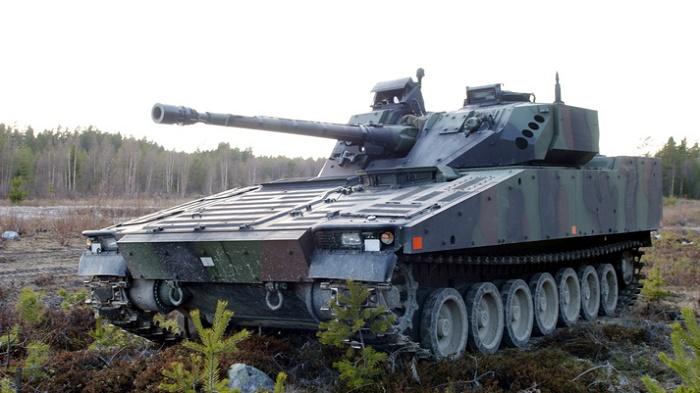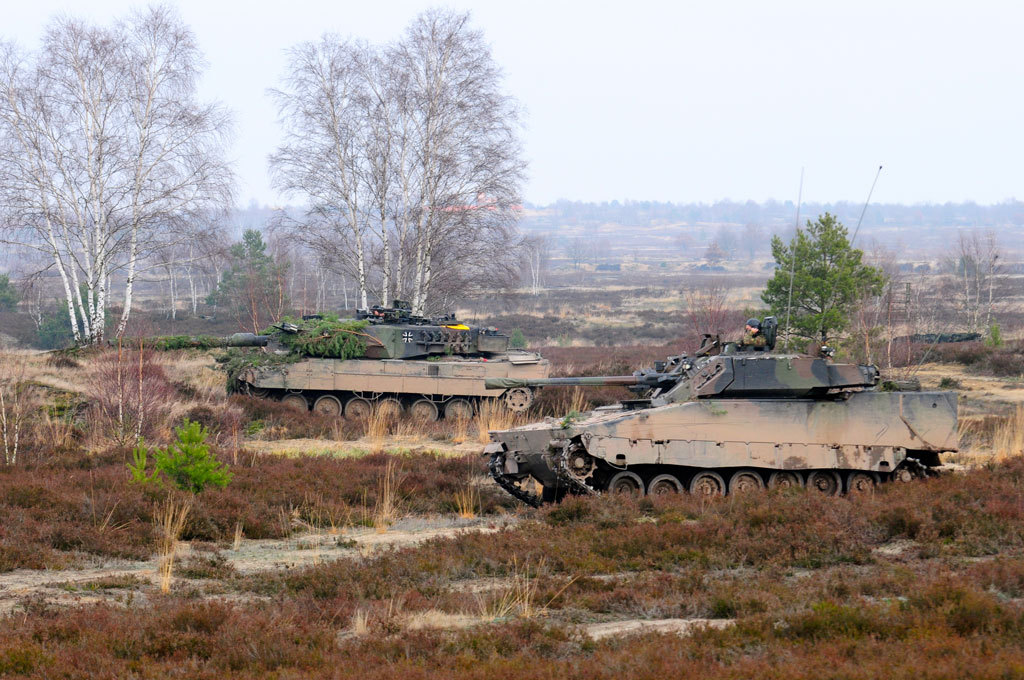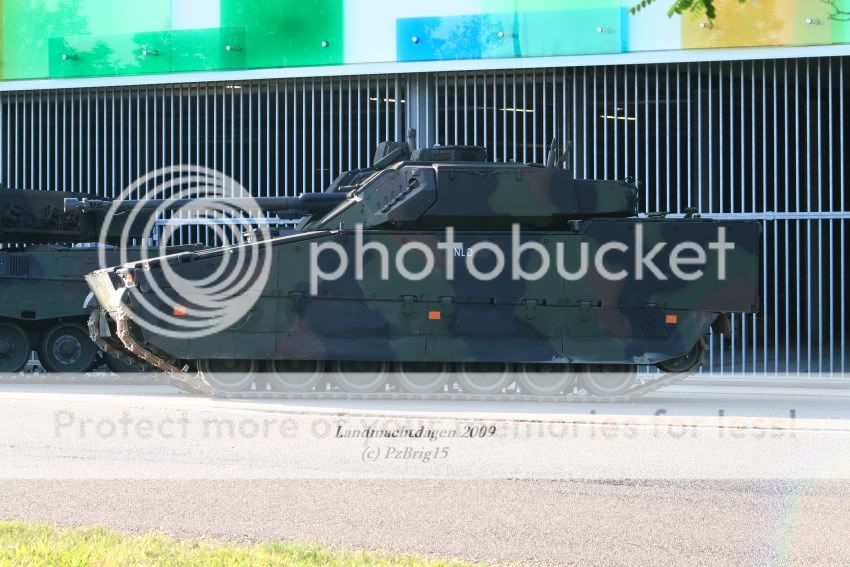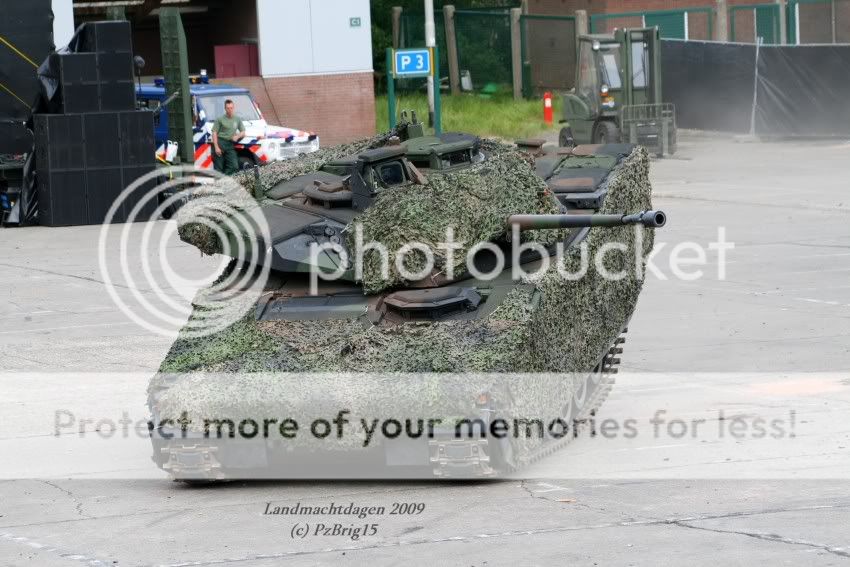DavidSling
SENIOR MEMBER

- Joined
- Oct 25, 2013
- Messages
- 4,826
- Reaction score
- 0
- Country
- Location
BAE Systems has received a contract from the Netherlands for the testing and verification of IMI's Iron Fist Active Protection Systems on its CV90 Infantry Fighting Vehicles
Ami Rojkes Dombe | 25/12/2016
Send to a friend
A+A-Size
Share on
Share on

baesystems.com
BAE Systems, the manufacturer of the Dutch CV9035 variant vehicles, will lead the APS integration. BAE Systems will also carry out the future installation of the system, called Iron Fist, developed by Israeli supplier IMI Systems. Iron Fist is an automated system that uses radar to detect and track threats and then takes action to eliminate the threat.
Active Protection is an advanced solution consisting of countermeasures that can intercept incoming rocket-propelled grenades, anti-tank missiles, and other threats to increase crew and vehicle survivability.
“Iron Fist will give the Dutch Army a highly sophisticated defensive tool on its CV90s to counter threats and improve the safety of the vehicle and its crew,” said Tommy Gustafsson-Rask, managing director of Sweden-based BAE Systems Hägglunds. “Iron Fist is yet another example of the advanced technology BAE Systems and its partners can deliver to our customers.”
The integration of this advanced APS solution onto the Dutch CV90s demonstrates the vehicle’s adaptability to new and evolving technologies to meet customer-specific requirements.
“During this test phase we will pre-qualify the active system against our threat specification, and together with our partners analyze system safety and prepare for its integration onto our CV9035NL vehicles,” said Hans de Goeij, project manager at the Netherlands Defense Materiel Organization, Ministry of Defense. “We expect to make a decision on the next phase by early 2018. With Iron Fist, the Netherlands is expected to become the first NATO country with an Active Protection System of its kind on combat vehicles.”
http://www.israeldefense.co.il/en/node/28009
https://defence.pk/threads/active-protection-system-aps-for-tanks.418153/#post-8086841
@Penguin @500 @Natan @Archdemon @GBU-28 @F-15I @mike2000 is back @Blue Marlin @Mountain Jew @Beny Karachun @Adir-M @Ilay
Ami Rojkes Dombe | 25/12/2016

Send to a friend
A+A-Size
Share on
Share on

baesystems.com
BAE Systems, the manufacturer of the Dutch CV9035 variant vehicles, will lead the APS integration. BAE Systems will also carry out the future installation of the system, called Iron Fist, developed by Israeli supplier IMI Systems. Iron Fist is an automated system that uses radar to detect and track threats and then takes action to eliminate the threat.
Active Protection is an advanced solution consisting of countermeasures that can intercept incoming rocket-propelled grenades, anti-tank missiles, and other threats to increase crew and vehicle survivability.
“Iron Fist will give the Dutch Army a highly sophisticated defensive tool on its CV90s to counter threats and improve the safety of the vehicle and its crew,” said Tommy Gustafsson-Rask, managing director of Sweden-based BAE Systems Hägglunds. “Iron Fist is yet another example of the advanced technology BAE Systems and its partners can deliver to our customers.”
The integration of this advanced APS solution onto the Dutch CV90s demonstrates the vehicle’s adaptability to new and evolving technologies to meet customer-specific requirements.
“During this test phase we will pre-qualify the active system against our threat specification, and together with our partners analyze system safety and prepare for its integration onto our CV9035NL vehicles,” said Hans de Goeij, project manager at the Netherlands Defense Materiel Organization, Ministry of Defense. “We expect to make a decision on the next phase by early 2018. With Iron Fist, the Netherlands is expected to become the first NATO country with an Active Protection System of its kind on combat vehicles.”
http://www.israeldefense.co.il/en/node/28009
https://defence.pk/threads/active-protection-system-aps-for-tanks.418153/#post-8086841
@Penguin @500 @Natan @Archdemon @GBU-28 @F-15I @mike2000 is back @Blue Marlin @Mountain Jew @Beny Karachun @Adir-M @Ilay









